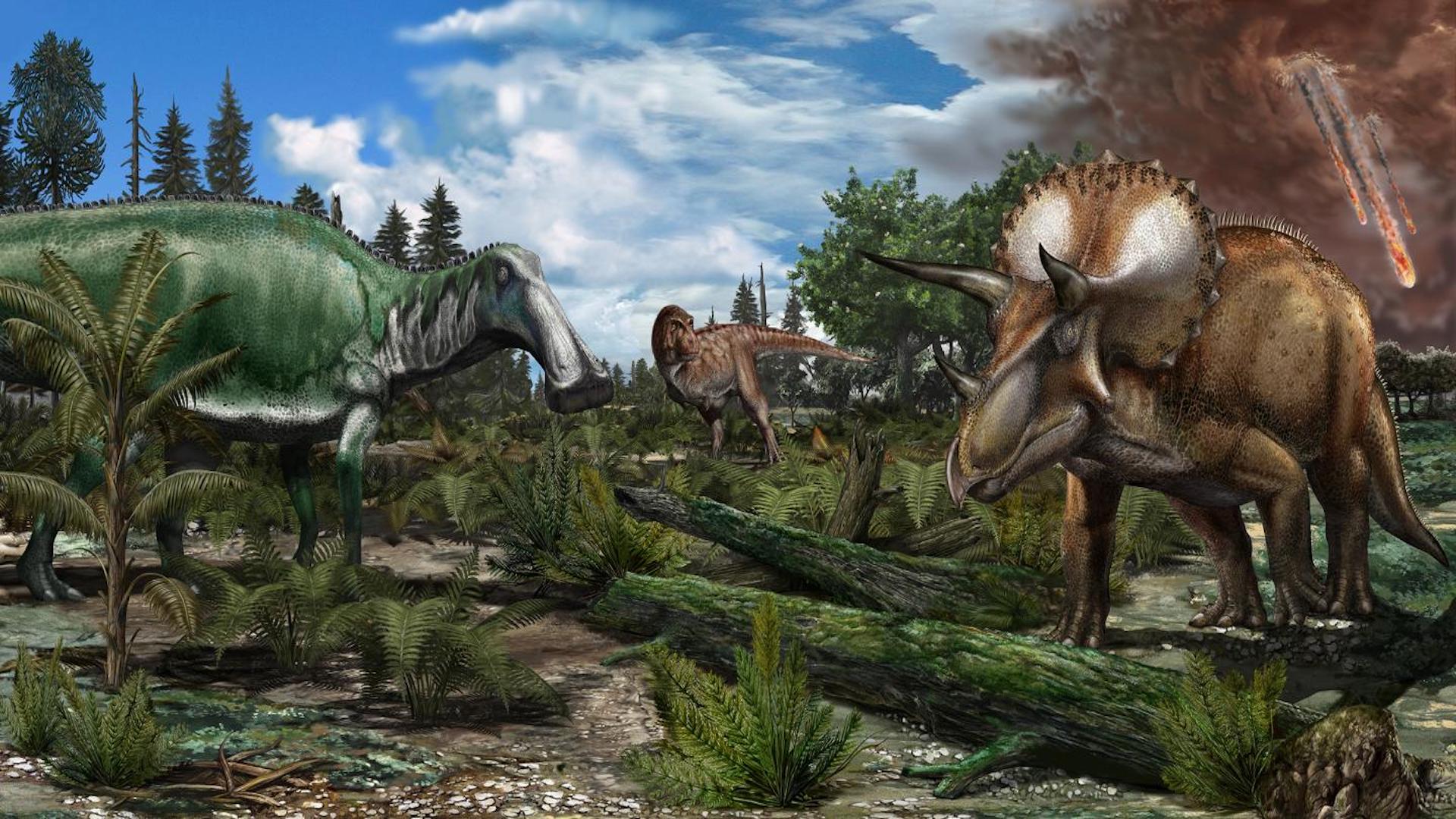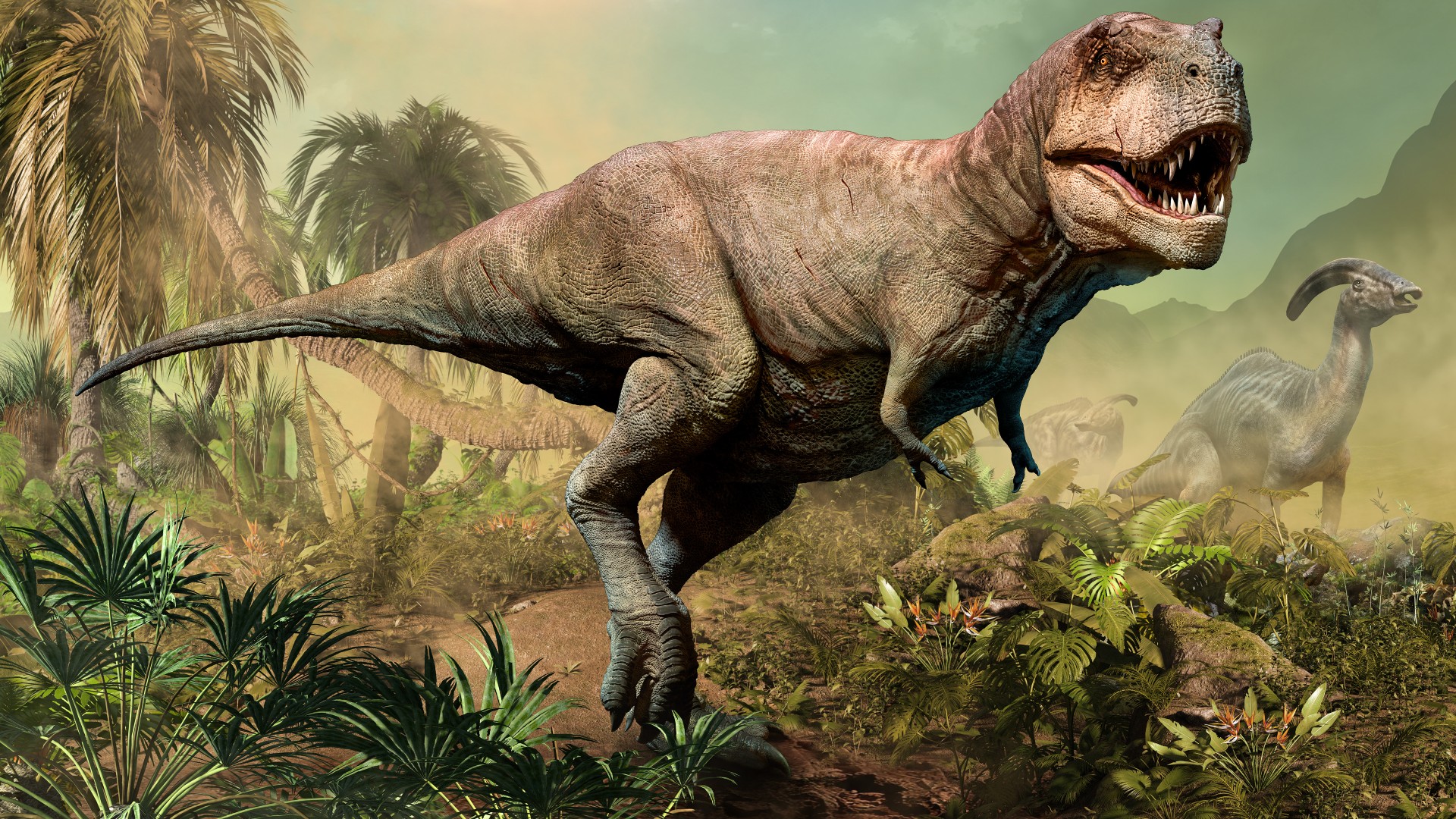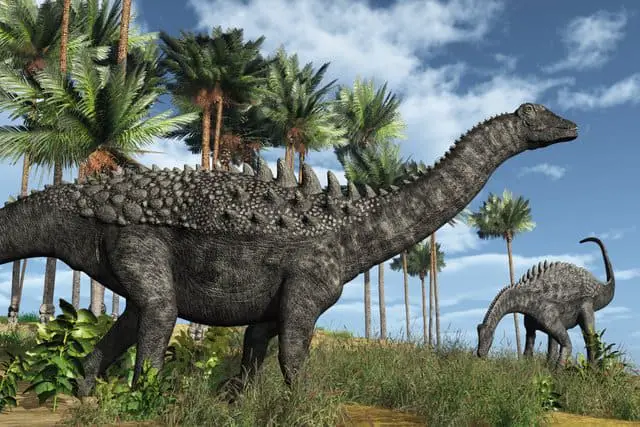Dinosaurs inhabited a diverse range of environments during their reign over the Earth.
Understanding where and how these prehistoric creatures lived provides fascinating insights into dinosaur behavior, evolution, and extinction.
This article explores the habitats dinosaurs occupied, how they adapted to their surroundings, and what ultimately led to their demise.
What Environment Did Dinosaurs Live In?
Dinosaurs inhabited a wide variety of terrestrial environments across the ancient supercontinents, including deserts, forests, jungles, swamps, rivers, mountains, and polar regions.
Key Points
- Dinosaurs first emerged during the hot, dry Triassic Period around 230 million years ago and dominated across changing environments until their extinction 66 million years ago.
- Dinosaurs evolved camouflaged skin, insulating proto-feathers, and specialized body structures to adapt to the diverse ecosystems they inhabited.
- Parenting techniques and herding behaviors helped dinosaurs improve their odds of survival before global climate disruptions led to their demise.
What Were the Different Environments and Eras Dinosaurs Lived In?
Dinosaurs inhabited a wide variety of environments and continents during the Mesozoic Era, which spanned over 180 million years.
The Mesozoic Era is broken into three main periods – Triassic, Jurassic, and Cretaceous.
Each period had distinct environments and dinosaur species.
How Did Dinosaurs Adapt to Deserts and Jungles in the Triassic?
Dinosaurs first emerged around 230 million years ago during the Triassic Period.
The hot, dry Triassic climate favored large deserts which early dinosaurs like the Coelophysis inhabited.
But some dinosaurs also lived in forests near the polar regions, indicating diverse habitats.
Dinosaurs from this time like Plateosaurus had limb adaptations to traverse rough desert terrain.
What Environments Did Dinosaurs Occupy in the Jurassic Period?
During the Jurassic Period, dinosaurs lived in tropical jungles, swamps, and forests across the supercontinent Pangaea.
Many giant long-necked sauropods inhabited swamps, using their large size for protection.
Rugged mountain ranges formed natural barriers between dinosaur habitats, influencing their evolution.
How Did the Cretaceous Climate Shape Dinosaur Habitats?
The Cretaceous Period saw the fragmentation of continents and the spread of flowering plants.
The temperate climate allowed polar dinosaurs like Leaellynasaura to live in the Antarctic with insulating feathers.
Hadrosaurs inhabited forests abundant in new flowering plant food sources.
Dinosaur habitats became more segregated as the continents continued to separate.
How Did Dinosaurs Physically Adapt to Their Varying Environments?
Dinosaurs evolved over millions of years to develop specialized adaptations that allowed them to thrive in the deserts, mountains, jungles, forests, and polar habitats of the Mesozoic world.
Their physical features offer clues about how dinosaurs interacted with their ecosystems.
What Skin Adaptations Helped Dinosaurs Camouflage and Regulate Temperature?
Some dinosaurs like Carnotaurus evolved camouflaged skin patterns to ambush prey and hide from predators in forested environments.
Desert-dwelling dinosaurs tended to have spiny skin protrusions to better retain moisture.
Insulating proto feathers helped polar dinosaurs conserve heat, even allowing breeding during the harsh winter months.
How Did Dinosaur Body Structures Aid Movement and Hunting?
Large sauropods like Brachiosaurus had columnar limb stances to support their massive weight while grazing the forest floors.
Raptors like Utahraptor evolved sickle claws and enlarged middle toes to swiftly pursue prey around wooded environments.
Giant spines on Dimetrodon’s back helped regulate temperature as they moved between land and water.
What Features Allowed Herbivorous Dinosaurs to Grind Fibrous Plant Matter?
The beaks, cheeks, and dental batteries of hadrosaurs like Edmontosaurus enabled them to grind and process tough plant matter.
Advanced jaws led to innovations like the sideways shearing teeth that allowed stegosaurs to dominate forest food niches.
Ankylosaurs also adapted strong facial armor and beaks optimized for chewing fibrous, low-nutrition vegetation.
How Did Behavioral Adaptations Aid Dinosaur Survival?
Beyond physical features, dinosaurs evolved behavioral adaptations that improved their odds of survival in the competitive dinosaur epoch.
Evidence of their societal structures, parental care, and communication methods paint a picture of dinosaur behavioral ecology.
Did Dinosaurs Live Solitary Lives or Coexist in Herds?
While some dinosaurs like Carnotaurus were lone hunters, others like Maiasaura reared offspring in large communal nesting colonies for protection.
Massive grazing hadrosaur and ceratopsian herds provided safety through strength in numbers.
Smaller predators may have formed hunting packs to take down larger prey.
How Did Parenting Behaviors Evolve Among Dinosaurs?
Primitive dinosaurs laid eggs and moved on, while more social species evolved extended parental care.
Fossilized “rookeries” indicate that hadrosaur like Maiasaura fed and protected helpless hatchlings, allowing more of their young to reach adulthood.
Some dinosaurs may have communicated with calls, gestures, or displays to coordinate parental duties.
Did Dinosaurs Make Noise or Use Other Communication Methods?
While little direct evidence exists, some dinosaurs likely vocalized using hisses, bellows, or bird-like calls.
Visual signals like decorative plates, horns, and frills conveyed status and attracted mates.
Some dinosaurs may have used infrasonic and seismic communication to silently coordinate over long distances.
Disease-free environments minimized the need for vocalizations.
How Did Changing Climates and Habitats Contribute to Dinosaur Demise?
Dinosaurs dominated for millions of years but vanished in a catastrophic mass extinction around 66 million years ago.
Their adaptable lifestyles ultimately could not shield them from global environmental upheaval.
How Did Continental Drift Impact Dinosaur Habitats and Populations?
As continents slowly fragmented during the Mesozoic, dinosaurs became geographically isolated in North America, South America, and Asia.
Smaller populations with limited gene flow were vulnerable to inbreeding and localized threats.
Disconnected habitats also prevented migration during dwindling resources.
How Might an Asteroid Impact Have Altered Global Ecosystems?
The cataclysmic Chicxulub asteroid impact 66 million years ago caused fires, earthquakes, and a lingering impact winter.
Loss of sunlight kills plants, disrupting food chains.
It also acidified oceans, collapsing marine ecosystems dinosaurs depended on.
The global climate changes proved too much for dinosaur adaptations.
Why Were Some Species More Resilient to Extinction Events?
Small omnivorous mammals and other archosaurs survived the mass extinction that eradicated the dinosaurs.
Mammals potentially had higher fertility rates, while crocodilians and birds could escape impact disasters in water and burrows.
Dinosaurs lacked sufficient means to shelter from global calamities.
Did The Dinosaurs Live in Hot or Cold Climates?
Dinosaurs lived in both hot and cold climates during the Mesozoic Era from about 230 to 66 million years ago.
During the Triassic Period around 230 million years ago, dinosaurs emerged in a hot, dry climate characterized by expansive deserts.
But some early dinosaur species also inhabited colder regions near the poles, indicating they were adapted to a range of temperatures.
The Jurassic climate favored jungles and forests, while polar dinosaurs endured frigid habitats in Antarctica and the Arctic in the Cretaceous Period with specialized insulation like feathers.
Overall, dinosaurs dominated every terrestrial climate and showed remarkable adaptability to extreme heat and cold.
Which Dinosaurs Lived in the Forest?
Many dinosaurs were forest-dwellers during the Mesozoic Era.
In the Triassic forests, early theropods like Coelophysis stalked prey using camouflage and agility.
Sauropods like Brachiosaurus, Diplodocus, and Apatosaurus foraged the abundant low-growing vegetation in Jurassic forests.
Armored dinosaurs, horned ceratopsians, raptors, and hadrosaurs all occupied Cretaceous period forests with flowering plants.
Forest-dwelling dinosaurs had traits like pronounced middle toes, horns, frills, and camouflage to thrive in their wooded habitats.
Did Dinosaurs Live Where It Was Cold?
Yes, compelling fossil evidence indicates a diversity of dinosaurs inhabited polar regions in the past.
The feathers and insulating body coverings of dinosaurs like Leaellynasaura provide clues these animals endured frigid Antarctic conditions during the Cretaceous Period.
Trackways in ancient Alaska and other northerly locations also suggest cold-adapted polar dinosaurs.
Their remains reveal adaptations like feather-insulating coats, short stocky limbs, and fast growth rates to withstand freezing Arctic and Antarctic environments.
Dinosaurs possessed remarkable resilience that enabled them to colonize a variety of cold habitats.
How Did Dinosaurs Survive The Cold?
Dinosaurs that inhabited ancient polar regions evolved specialized adaptations that allowed them to survive in cold environments.
Insulating feather coats, like those found on Leaellynasaura, helped polar dinosaurs conserve body heat.
Smaller surface area to volume ratios in stocky builds also reduced heat loss.
Counter-current blood flow in limbs kept their extremities from freezing.
Polar dinosaurs likely had antifreeze proteins and fatty insulating tissues as well.
They may have migrated or hibernated to escape winter extremes.
Fast growth was key to reaching maturity and size refuge from the cold.
Their remarkable adaptations allowed dinosaurs to thrive under frigid polar conditions.
In Summary
Dinosaurs thrived for eons by adapting to diverse Triassic deserts, Jurassic jungles, and Cretaceous forests across the ancient supercontinents.
They evolved specialized features from body armor to feathers to camouflage within their environments.
Parenting techniques and herding behaviors further improved survival.
However, dinosaurs were still vulnerable to global catastrophes that disrupted their world.
Understanding the relationship between dinosaurs and their habitats provides glimpses into their ascent, dominance, and ultimate downfall.
FAQ
What Were Some Desert Environments Dinosaurs Inhabited?
Deserts covered large portions of the supercontinent Pangaea during the Triassic Period, providing a habitat for early dinosaurs like Coelophysis. Desert-dwelling dinosaurs evolved adaptations like spiny protrusions to better retain moisture.
How Did Dinosaurs Survive in Polar Regions?
Fossil evidence indicates polar dinosaurs endured frigid Arctic and Antarctic environments with the aid of insulating proto-feathers that helped them conserve body heat.
What Swamp Environments Did Dinosaurs Occupy?
During the Jurassic Period, massive long-necked sauropods inhabited swamps and wetlands where they used their large size to their advantage against predators. Their columnar limb stance supported their huge weight on the soft swamp terrain.
What Forest Types Did Dinosaurs Live In?
Dinosaurs occupied various forest types including pine forests and new angiosperm forests during the Cretaceous Period. Forest-dwelling dinosaurs like Utahraptor evolved traits like enlarged middle toes to pursue prey through wooded environments.
At GreenChiCafe, we are passionate about our fragile planet and the wonders of the natural world. Explore our website for more content on the diverse species and habitats that make our earth exceptional. Let’s work together to protect and preserve them.

Annie is a passionate environmental writer and activist. She has been writing about sustainability, conservation, and green living for over 15+ years. Annie is dedicated to raising awareness about environmental issues and providing practical tips for living an eco-friendly lifestyle. When she’s not writing, you can find her volunteering with local environmental organizations, teaching workshops on zero waste living, or exploring nature. Feel free to get in touch with Annie: annie@greenchicafe.com



